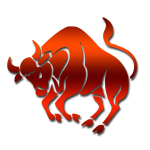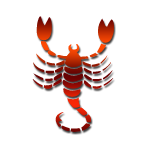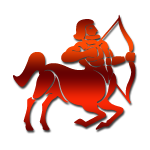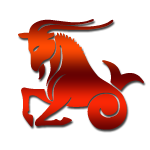Paid Services
Diwali 2017 - The Festival Of Lights
Diwali in 2017 is on October 19. On Diwali or Deepavali, India turns itself into an array of lights and such a brightness refers to penetrate through the darkness of mankind and enlighten us. Read below to know more about Diwali - The Festival Of Lights.
 Diwali is one of the biggest festivals of India. Hence, we have brought you everything you need to know about Diwali.
Diwali is one of the biggest festivals of India. Hence, we have brought you everything you need to know about Diwali.
Diwali is derived from the Sanskrit term Deepavali which means an array of lights. Thus, Diwali is also referred to as the Festival of Lights. Being associated with the term Festival of Lights, Diwali or Deepavali means much more than just lighting a lamp or burning of fireworks. It marks the removal of darkness, worldly concerns and ignorance from one’s soul and replace it with the Lord’s divinity.
Goddess Laxmi, the Goddess of prosperity, is worshiped on Diwali night. This also marks the commencement of the new financial year for the North Indian businessmen. Prosperity and well-being of a family is called upon by worshiping Goddess Laxmi or Lakshmi Devi through Laxmi Puja.
Diwali brings the gathering of different people together and spreads a dazzled muse of entertainment and joy. People exchange sweets among each other while the children prefer burning fire-crackers. Candles and clay lamps lit on the Diwali night pierce into the dark night of Amavasya (New Moon) and transforms the darkness into enlightenment.
Now, let’s know the reason for celebrating Diwali.
Diwali : Why Should We Celebrate Diwali?
In North India, Diwali celebrates the return of Lord Rama to Ayodhya after spending 14 years in exile with his wife, Sita and brother, Lakshmana. The welcoming gesture signified the victory of good over evil as Lord Rama went on to defeat the demon King, Ravana during his prodigal years. The night of his return was Amavasya (No Moon night) and it is believed that people of the Ayodhya kingdom had lit the royal family’s path with lamps in the darkness.
In South India, Diwali commemorates the seizing over Narakasura. Lord Krishna freed thousands of inhabitants after subduing Narakasura whom he had captured over the years. It is celebrated in the Tamil month of Aippasi ‘Narak Chaturdashi’. Narak Chaturdashi is celebrated as ‘Chhoti Diwali’ in North India.
Now when you know the reason to celebrate Diwali, let’s talk about the procedure of celebrating this grand festival of lights.
Diwali : How To Celebrate Diwali?
In North India, the festive proceedings begin two days before Diwali with Dhanteras. Dhanteras falls on the thirteenth day of Kartik month of the Hindu Calendar. On this day, golden or silver utensils are purchased as an auspicious tradition. This holds great importance for the mercantile community, as it is a step closer to welcome home prosperity.
You may also like to read:
Dhanteras, also known as Dhantrayodashi. Dhan means wealth and trayodashi means the thirteenth day of the lunar month. It is followed by “choti Diwali”. “Chhoti Diwali” is celebrated as Narak Chaturdashi in the northern region of India.
The next day marks the arrival of Diwali. As an important Hindu tradition, special Pujas to Goddess Laxmi are dedicated. Cleaned houses are decorated with clay lamps, candles, wall decorations that are meant to invite Goddess Laxmi to the house and her blessings are believed to bring wealth, prosperity and happiness along with her. Neighbors, friends, relatives exchange sweets, gifts, greetings among themselves inviting a feeling of togetherness.
As you are planning to perform Laxmi Puja on Diwali, you should know: Which Form Of Laxmi Should We Worship?
Govardhan Puja is the fourth day of the Diwali festival while the fifth and the last day marks the special relationship between a brother and his sister, known as Bhaiya Dooj or Bhai Dooj.
As we move towards the eastern region of the country, we can notice vivid changes in Diwali celebration. West Bengal celebrates Kali Puja accounting to Durga’s triumph over Bakrasura in the form of Goddess Kali. Bengalis perform Kali Puja on the night of Deepavali.
In Bihar and Assam, Diwali is celebrated in the same manner as in the northern part of the country. Devotees worship Goddess Laxmi and light earthen lamps (‘Diyas’). Although, Orissa has its own unique way of celebration. The family members involved in the worshiping process burn the stems of jute plants, which according to them is the way to call their ancestors by enlightening the dark path.
Now, when you know how and why to celebrate Diwali, let’s know the mythologies associated with this festival of lights.
Diwali : Mythological Significance Of Diwali
As discussed above, Diwali is not a mere festival of one day. It is a holy proceeding of five days where each day holds its own significance. Let’s first talk about the first day (Dhanteras) and know why to celebrate Dhanteras.
Dhanteras
Talking about significance, the days are also related to the Hindu mythology that begins with Dhanteras. Dhanteras is dedicated to Dhanvantari, the physician of Gods and an incarnation of Lord Vishnu. Let’s now know the entire legend.
Legend Of Dhanteras
 When Gods and demons were churning over the milk ocean to attain the nectar of immortality (also known as ‘Amrit’), Dhanvantari emerged out of the water with a pot of Amrit in his hand. Lord Vishnu managed to give the pot to the Devas or gods and they achieved immortality. This marks the discovery of Ayurveda, which is the method of healing people with natural methods.
When Gods and demons were churning over the milk ocean to attain the nectar of immortality (also known as ‘Amrit’), Dhanvantari emerged out of the water with a pot of Amrit in his hand. Lord Vishnu managed to give the pot to the Devas or gods and they achieved immortality. This marks the discovery of Ayurveda, which is the method of healing people with natural methods.
Dhanteras has more than one mythological evidence attached to it like many other Hindu Festivals. There is another story that claims the reason to celebrate Dhanteras. The story is of the son of King Hima and his newly married wife. It was predicted that King Hima’s son would face death of a snake bite on his fourth marital day. When his wife came to know about the prediction, she planned to save her husband’s life, desperately.
His wife lighted lamps throughout the place and gathered her jewelry articles at the doorstep. She started singing songs and telling stories to the husband to abandon him to sleep. In the midst time of the night, Lord Yama referred to be as the Lord of Death, arrived in the guise of a snake. The bright lights lit by the wife stopped him from entering the chamber as it blinded his eyes. He found a comfortable place near the jewelry articles and decided to rest over it.
As the wife kept telling stories to her husband the whole night, Lord Yama did not get a chance to enter inside. When the morning arrived, Lord Yama surrendered the place quietly. Thus, the wife protected her husband from his predicted death. Since then, Dhanteras is also termed - ’Yamadeepdaan’ and lamps are lit in adoration to the Lord Yama, God of Death.
Let’s now talk about Narak Chaturdashi and know why to celebrate Chhoti Diwali.
Narak Chaturdashi
 Chhoti Diwali follows the day of Dhanteras. It is also known as Narak Chaturdashi. It is the second day of Diwali that falls on the fourteenth day of Kartik month. The name Narak Chaturdasi accounts to Narakasura, the ruler of Pragjyotishpur. Let’s know the legend of Narak Chaturdashi or Chhoti Diwali in detail.
Chhoti Diwali follows the day of Dhanteras. It is also known as Narak Chaturdashi. It is the second day of Diwali that falls on the fourteenth day of Kartik month. The name Narak Chaturdasi accounts to Narakasura, the ruler of Pragjyotishpur. Let’s know the legend of Narak Chaturdashi or Chhoti Diwali in detail.
Narak Chaturdashi Legend
Narakasura had shown atrocious cruelty towards women after defeating Lord Indra. He captured sixteen thousand daughters of the Gods in his harem and showed disrespect towards Aditi, the Mother Goddess. Ironically, he was predicted to die in the hands of a woman.
Enraged by his behavior, Satyabhama (Lord Krishna’s wife) indulged in a battle with Narakasura while Lord Krishna was the charioteer. Naraka was beheaded with this divine intervention and the sixteen thousand daughters were ultimately freed from the prison. This marks the good winning over evil. In the southern part of India, the celebration process starts in the early morning and is uniquely performed. They have the queer tradition of mixing Kumkum (vermilion) in oil that symbolizes blood and they have the tradition to break a bitter fruit that represents beheading the demon, Narakasura. Then they apply it to their foreheads.
Diwali : The Big Day!
The third day of the Deepavali festival (also known as ‘Badi Diwali’) is dedicated to Goddess Lakshmi. It is regarded as the most joyous and important day of the Diwali festival. The day falls on a New Moon night, Amavasya. The impenetrable darkness of the Diwali night is enlightened by candles and clay lamps all around. Laxmi Puja is performed on this night in most parts of North India and West India. It is believed that the Goddess showers blessings of prosperity and wealth on her devotees.
 The third day is devoted to Laxmi in her five forms:
The third day is devoted to Laxmi in her five forms:
- Gajendra: Carrying prosperity
- Indra: Opulence
- Vishnu: Happiness
- Kubera: Wealth
- Lakshmi: Divinity
According to Vishnu Purana, this day is believed to be the emergence of Goddess Lakshmi from Kshira Sagar (ocean of milk).
Let’s now talk about the fourth day (Govardhan Puja) and know why to celebrate Govardhan Puja, the Annakut day.
Govardhan Puja
Govardhan Puja is performed on the fourth day of the festival. The mythological evidence linked with Govardhan Puja accounts to Lord Krishna and the village of Gokul, in Mathura.
Govardhan Puja Legend
As per Vishnu Purana, the Gokul natives used to honor Lord Indra at the end of each monsoon, which was once stopped by Lord Krishna. In response, Indra (almost) subdued the village with heavy rains.
 The people got scared by the downpour and admitted it as the result of their neglect towards Lord Indra. However, Lord Krishna assured them safety. He lifted the hillock of Govardhan with his finger and sheltered everyone from the storm. This gave him the epithet - ’Govardhandhari’.
The people got scared by the downpour and admitted it as the result of their neglect towards Lord Indra. However, Lord Krishna assured them safety. He lifted the hillock of Govardhan with his finger and sheltered everyone from the storm. This gave him the epithet - ’Govardhandhari’.
The day is also observed as ‘Annakoot’ (mountain of food). In Mathura, the pious devotion towards Lord Krishna is seen on this day. Devotees keep awake the whole night and prepare 56-108 food items in honor of Lord Krishna. The deities are given milk-bath in temples at Mathura and are dressed in precious ornaments. Proceedings of food and sweets are ceremoniously offered to the Lord that are raised as Bhogs and then the devotees approach the Bhog to take Prasad from the mountain of food.
Now, let’s know why to celebrate Bhai Dooj.
Bhai Dooj
Then arrives the fifth and the last day of Diwali festival, Bhaiya Dooj. The word Bhaiya means brother and Dooj means the second day after the New Moon. Bhaiya Dooj is celebrated on the fifth day of the festival. Bhaiya Dooj signifies the bond between a brother and his sister that strengthens the bond of love, care and affection. The sister honors her brother with Tilak or vermilion mark on his forehead and in return, the brother give gifts to the sister. It is also known as Yama Dwitiya.
Legend Of Bhai Dooj
 The bondage between Yamraj, the Lord of Death and Yamuna yearns the significance of Bhaiya Dooj or Yama Dwitiya. Yamraj and Yamuna were the children of Lord Surya, the Sun God and Samjna (also known as Sangya). Unable to bear the brilliance of her husband, Samjna decided to leave Heaven for the earth, but left her exact replica, Chhaya, behind.
The bondage between Yamraj, the Lord of Death and Yamuna yearns the significance of Bhaiya Dooj or Yama Dwitiya. Yamraj and Yamuna were the children of Lord Surya, the Sun God and Samjna (also known as Sangya). Unable to bear the brilliance of her husband, Samjna decided to leave Heaven for the earth, but left her exact replica, Chhaya, behind.
Chhaya turned to be cruel and convinced Surya to abandon the twins (Yamraj and Yamuna) and drive them out from the Heaven. As a result, Yamuna fell to the earth and Yamraj went to hell to become the Lord of Death. After many years had passed, Lord Yamraj decided to reach his sister. His sister was elated to hear the news and prepared a gigantic welcome for Yamraj.
After spending a pleasant time together, Yamraj asked his sister Yamuna if she wished anything from him. After persistence trials by the brother, Yamuna replied, “I wish that all brothers should visit their sisters on this day, if they can, and the sisters should pray for the good lives of their brothers.” Yamaraj granted her wish.
It is also said that after killing the demon, Narakasura, Lord Krishna went on to visit his sister Subhadra and she welcomed him in the traditional manner by performing Aarti and putting Tilak (vermilion mark on forehead). This is also claimed to be one of the mythological evidences for celebrating Bhai Dooj. In West Bengal, it is also known as Bhai Phota, however, the same traditions are considered.
Although, Diwali is celebrated in the same manner in most parts of the country, West Bengal differs a lot as far as the traditions are concerned. Let’s take a look at the way it is celebrated in West Bengal.
Diwali In West Bengal
In West Bengal, Kali Puja is celebrated unlike the other parts of the country that celebrate Deepavali or Badi Diwali on the day. The Bengalis prefer to increase the gusto of the festival by burning firecrackers than lighting up clay lamps and candles. The Puja of Goddess Kali is generally performed in the midnight and the priests performing it leave no measures unturned. It is also known as Shyama Puja.
The Legend Of Kali Puja
According to legends, once two demons Shumbha and Nishumbha had spread terror posing a challenge to Lord Indra, King of Gods and his heaven. Gods asked for protection from Goddess Durga. At that time, Goddess Kali was born from Durga’s forehead as Kal Bhoi Nashini to save earth and heaven from the atrocity of demons.
She slaughtered the demons and wore their heads as garland across her neck. In the midst of killing, she lost control and started killing anyone who came in her way. The situation got chaotic and beyond anyone’s control. To stop her from doing this, Lord Shiva came under her feet. At this sight, Goddess Kali’s tongue came out in astonishment. The same repenting moment can be seen in the photographs depicting Goddess Kali with her tongue spilled out.
 Since then, Kali Puja is performed on the same day (Amavasya) to seek protection from worldly problems and blessings of happiness and prosperity. A Tantrik Pooja is also performed at midnight of Kali Puja known as the Kali Poojan.
Since then, Kali Puja is performed on the same day (Amavasya) to seek protection from worldly problems and blessings of happiness and prosperity. A Tantrik Pooja is also performed at midnight of Kali Puja known as the Kali Poojan.
While people in North India and West India worship Goddess Lakshmi on Diwali, Lakshmi Devi is worshiped on a Full Moon night (Purnima) in lunar month of Kartik in West Bengal known as Kojagara Puja or commonly known as Lakshmi Puja.
Bhaiya Dooj is known as Bhai Phota in West Bengal that is celebrated a couple of days after Kali Puja. It is celebrated in the same manner as it is done in North India.
It Is Diwali After All
Be it anywhere in India, Diwali is considered to be the festival that brings a festive aura into the air. It brings prosperity, happiness and blessings from gods and goddesses, irrespective of being Lakshmi Puja or Narak Chaturdashi or Kali Puja.
Diwali
Diwali or Deepavali is usually celebrated in the mid half of October or November. It is preceded by Durga Puja and Dussehra. Diwali in 2017 is on October 19.
Diwali is a five day festival as it had been in the previous years. Diwali starts on the commencement of Dhanteras. Dhanteras in 2017 is on October 17.
Dhanteras is considered to be an important dateline. It marks the coming of prosperity in the house when people buy precious items made of gold, silver etc.
Chhoti Diwali in 2017 is on October 18. The second day of Diwali is celebrated as Narak Chaturdashi.
The Badi Diwali is on October 19, 2017. Lakshmi Puja is performed on this day. The third day of Diwali is succeeded by Govardhan Puja. Govardhan Puja in 2017 is on October 20.
Diwali ends with Bhaiya Dooj. This year, i.e. in 2017, Bhaiya Dooj is on October 21. The festival of Diwali is expected to bring joy, happiness and moments of togetherness.
You may buy the worship items related to Diwali here:
- Diwali Lakshmi Pujan Kalash
- Kamal Gatte Ki Mala (Rosary of dried lotus seed beads used for Laxmi Puja)
- Ganesh-Lakshmi Silver Coin (Used while Diwali Pujan)
- Ganesh-Lakshmi Gold Coin (Used while Diwali Pujan)
- Ganesh-Lakshmi Ashtadhatu Idol (Used while Diwali Pujan)
- Ashtadhatu Idol Of Lakshmi (Used while Diwali Pujan)
The team of AstroCAMP wishes you a Happy Diwali. Have a safe Diwali.
 Best quality gemstones with assurance of AstroCAMP.com More
Best quality gemstones with assurance of AstroCAMP.com More
 Take advantage of Yantra with assurance of AstroCAMP.com More
Take advantage of Yantra with assurance of AstroCAMP.com More
 Yantra to pacify planets and have a happy life .. get from AstroCAMP.com More
Yantra to pacify planets and have a happy life .. get from AstroCAMP.com More
 Best quality Rudraksh with assurance of AstroCAMP.com More
Best quality Rudraksh with assurance of AstroCAMP.com More
Get your personalised horoscope based on your sign.



















